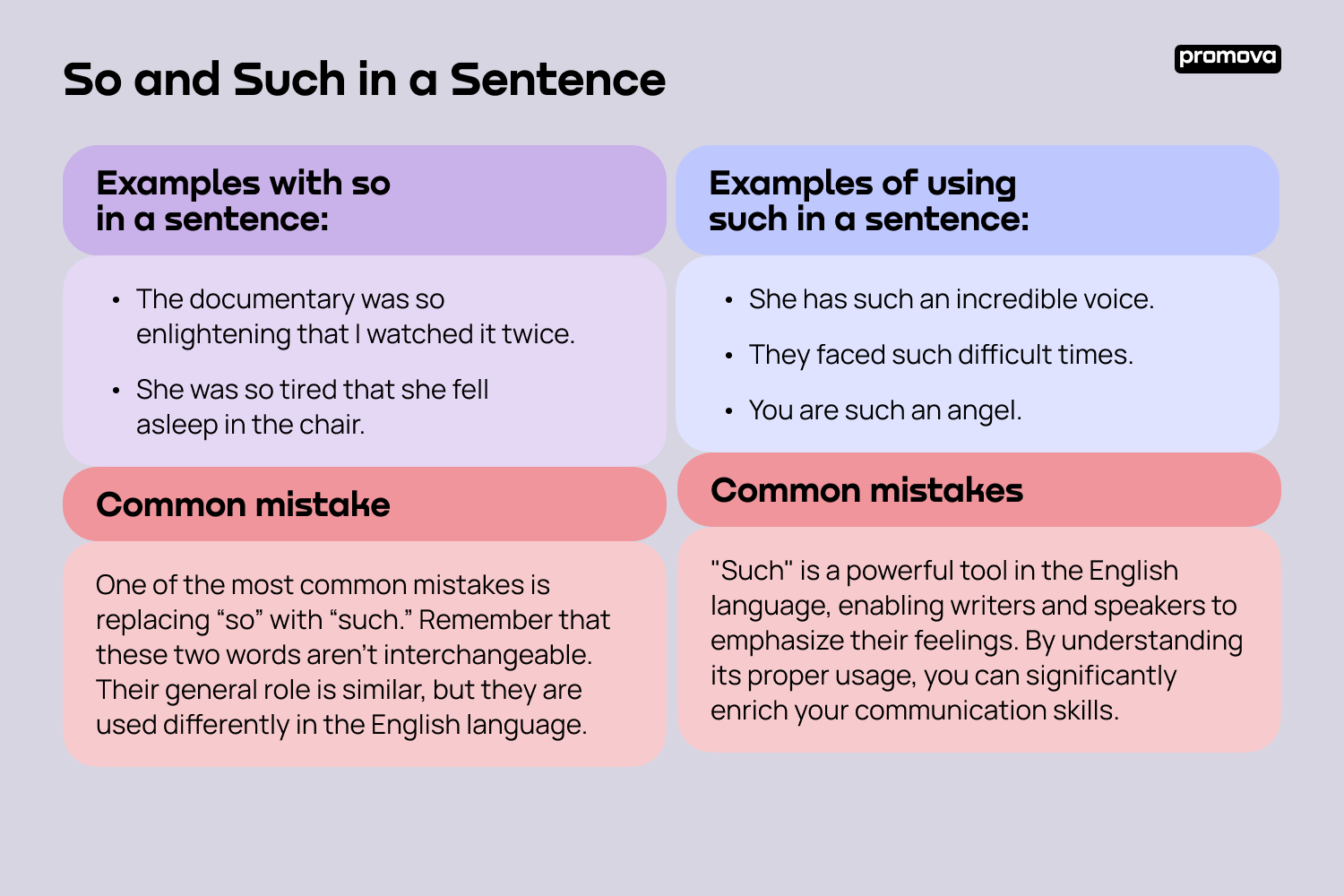So and Such in a Sentence
Contents
Learning English, many people quickly understand that the power of expressing feelings often lies in grammar and vocabulary. One of the cases is intensifiers “so” and “such.” They help to add emphasis and depth to any speech. At the same time, their misuse or overuse can lead to confusion. In this article, you will learn how to place so and such in a sentence naturally and enrich your conversations.
The Basics of So and Such
What are intensifiers? These are words that help to give more power to feelings and emotions. In English, intensifiers can add drama and tension to your speech. They also add variety and flexibility to language.
“So” is an adverb used to intensify the degree of adjectives or other adverbs. “Such” is an adjective used to intensify nouns and noun phrases. Below, you will find rules for using each word, common mistakes, and tips for mastering the usage of so and such.
Rules and common mistakes of using so
“So” usually precedes adjectives and adverbs, amplifying their meaning. Very often, it prepares the ground for a result or consequence that a speaker introduces by “that.” Here are some examples with so in a sentence:
- The documentary was so enlightening that I watched it twice.
- She was so tired that she fell asleep in the chair.
One of the most common mistakes is replacing “so” with “such.” Remember that these two words aren’t interchangeable. Their general role is similar, but they are used differently in the English language.
Another mistake is the overuse of “so.” Integrating this word very often reduces the impact of your message. Add “so” only when you want to give force to a certain feeling. To avoid repetition and keep your language vibrant, you can also replace "so" with its synonyms like "very," "extremely," and "incredibly."
5
Rules and common mistakes of using such
"Such" is an intensifier that is used to emphasize qualities or states, expressing a high degree of something when referring to nouns or noun phrases. It's a versatile word that can significantly impact the tone and clarity of your sentences when used correctly.
- Such in a sentence is always used before a noun noun or a noun phrase.
- It can be used with both singular and plural nouns, as well as uncountable nouns.
- When an adjective precedes a singular noun, use a/an after “such.”
Here are some examples of using such in a sentence:
- She has such an incredible voice.
- They faced such difficult times.
- You are such an angel.
"Such" is a powerful tool in the English language, enabling writers and speakers to emphasize their feelings. By understanding its proper usage, you can significantly enrich your communication skills.

Conclusion
Using “so” and “such” in English can add more depth to your messages. These two words are great tools for informal communication and even some formal contexts. The key rule is not to overuse them. Both “so” and “such” should be placed only when there is a strong necessity to force an emotion or feeling.



Comments